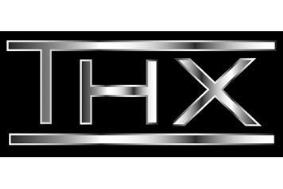CES 2011: THX Steerable Line Array technology promises near-invisible AV sound
THX has patented a range of technologies that promise directional home cinema sound from tiny speakers - and micro, battery-powered AV receivers


This is no mere concept, however - we saw (and heard) working samples of the technology, which has been in development for nine years, and includes a range of patents registered by THX Chief Scientist and senior vice president, Laurie Fincham.
"it's all about you, the customer," explains Fincham."People want great sound without having to see it; without huge boxes dominating homes - and without it pulling power when it's not in use".
There is an excellent video on THX's website that explains more about Steerable Line Array in 90 seconds than we could in many wordy paragraphs, but in short it's a system that enables sound to be produced - and directed - in a very different way to standard AV receiver/speakers.
Ultra-compact AV amps
For example, its all-analogue amplifier design can be made small enough that a multichannel, high-power receiver could be replaced by a unit smaller than a laptop PC. And that amp would be so energy efficient that it could run for several days on a set of rechargeable, lithium-ion phosphate batteries (using no power on standby, either).
The speaker array, meanwhile, is designed to almost infinitely scaleable, to fit into a wide range of units. We heard a set that fitted into a unit slimmer than most existing under-TV soundbars, yet was providing more than 90 discrete channels of sound.
Focussed sound
Get the What Hi-Fi? Newsletter
The latest hi-fi, home cinema and tech news, reviews, buying advice and deals, direct to your inbox.
We heard that sound being directed in interesting ways around the room, too. For example, while one person on the left of the room was getting the full force of the music/movie, another on the right of the room was only hearing background-listening level sound.
Another demonstration showed two separate audio sources being played in the same room, but directed to different listeners. Clever stuff, and something which could - for example - really help homes where you want to enjoy your music and movies but not annoy your neighbours.
“While innovation on the visual display side of home entertainment has been rapid, the audio side has been slower to evolve,” adds Fincham. “Sound is too important to take a backseat. These new technologies will allow more people to hear music at its best wherever they sit.”
The THX Steerable Line Array system also uses AVB (audio-video bridging) technology from Bristol company, XMOS; a network protocol that is used to distribute and direct the multiple channels of audio - and indeed video, where appropriate - involved.
The technology will enable individual Line Array modules to be networked to create larger arrays.
THX are here showcasing Steerable Line Array to a wide range of potential partners - we could be just a couple of years away from real-world products based on the technology.
